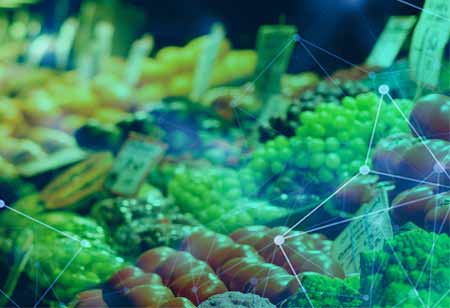Thank you for Subscribing to Food Business Review Weekly Brief
Significance of Food Processing and Packaging Technology in the Savory Snacks Sector

By
Food Business Review | Tuesday, March 15, 2022
Stay ahead of the industry with exclusive feature stories on the top companies, expert insights and the latest news delivered straight to your inbox. Subscribe today.

The difference between meals and snacks has progressively blurred because of consumer demand for convenience, "better for you" products, and leniency.
FREMONT, CA: Manufacturers have a fascinating opportunity to profit from the expanding trend. Still, as the snack market seeks to disassociate itself from guilt-inducing consumption by introducing healthier ingredients and more sustainable processing and packaging, it is necessary to evaluate the technology required to create the next generation of products that deliver nutritious authentic products snackable moments.
This article studies the most significant trends for savory snacks allowing producers to re-imagine the industry.
Health and wellness are motivating factors.
Snacking is obtaining popularity as a handy approach to alleviate hunger while also consuming nutrient-dense foods that promote mental and physical health. Customarily associated with salty, high-fat foods, manufacturers of savory snacks are experimenting with means to maintain enjoyment while presenting healthy alternatives rid of post-consumption guilt.
Snacks' nutritional profile light consumer interest, with items making health and wellness claims growing at a CAGR of 1.3 percent between 2013 and 2018.
Brands can underwrite this desire by developing functional snacks that promote physical, cognitive, and emotional wellness.
Emphasis on sustainability
Environmental is a rising concern for snack makers of all sizes, as businesses face increasing demand from customers and governments to improve their sustainability credentials.
Consumers seek guilt-free consumption that expands beyond the ingredients of a product to the packaging and manufacturing techniques used to create it. The blend of organizational and customer pressure will continue to drive technology advancements toward more environmentally friendly industrial methods.
Techniques for decreasing energy and plastic consumption
Once making new purchases, researching equipment and ingredients, especially the sustainability of packing equipment, can make all the difference in waste and reduction. VFFS(Vertical form fill seal) systems are a popular type of packing equipment because they boost output without needing more resources such as time, energy, or personnel or requiring the installation of additional machines.
This allows producers to streamline their packaging process with a single piece of equipment and achieve optimal productivity and energy savings using improved packaging speeds and yield. Moreover, it can assist producers in decreasing product waste to as little as 0.5 %, enhancing the brand's and products' sustainability credentials.
Many VFFS systems contain sealing technology, which can aid in the reduction of plastic waste. Manufacturers reduce film consumption by reducing the length of film needed per bag using features like single serration jaws.
The jaws donate to creating a pillow-like bag with a smaller seal area, permitting you to either increase bag volume while retaining the same bag length or decrease film usage while maintaining the same book. Due to their reduced profile, these systems use less jaw heat (and thus less energy). They achieve a faster seal time and enhance end-product quality.
Check Out This : Energy Procurement Services Companies






